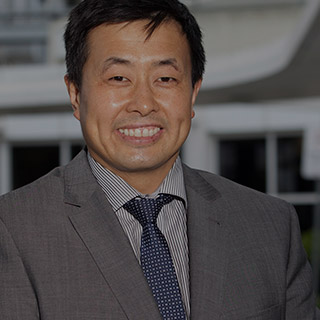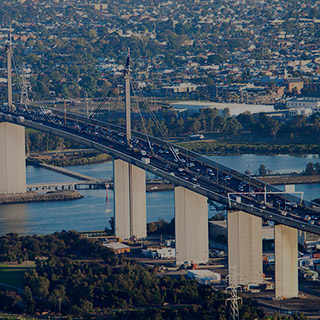Arlene Wake
Director of community integration and service planning, former executive director of medical services at Western Health 2003–present
Dr Arlene Wake grew up in Sunshine. She was educated at Christ the King College Braybrook and graduated from Melbourne University’s medical school. She first worked at Footscray hospital in 1982 as a registrar in the emergency department. She was a medical manager at the Alfred Hospital before taking on senior roles as a medical administrator at Western Health.
Orbiting power bases - the relationship between surgeons and hospital management
Surgery is one of the loneliest professions because in the end the surgeon is the decision maker, making critical life decisions about patient care. They have a reputation for not being the best communicators and yet we want them to be the sort of people who can make those critical life decisions.
Trying to get that mix in an individual is quite difficult. We as medical administrators and medical directors try and understand those attributes and try to get the best of both – help them to be good communicators but understand that from the patient outcome point of view, we really want the surgeons’ technical and decision making abilities to be great as well.
We’re looking for a lot of things from the one person.
For a hospital to transition to the next level you’ve got to have more of a presence of the physicians and the surgeons in the structure of the organisation. That’s difficult with Visiting Medical Officers who have responsibilities outside the hospital such as appointments at other hospitals or their private practice.”
Moving to a flatter management structure
“About 11 years ago we started to change things, tried to make sure that surgeons had an appointment with us, had perhaps their private practice but not too many other distractions.
We created a new position at the hospital – chief surgical registrar – who would have the job of liaising between the consultants, administration and junior staff.
The management structure had been divided along traditional professional lines of medical services and nursing services and so on. It was rearranged and flattened to redirect more resources to patient care and develop better communication and cooperation between management and clinicians.
When we introduced the flatter management structure we made sure that the clinicians had a medical staff member and a management staff member heading each service. The two people are partners in managing the service. The management person looks after the service and they know the budget inside out.
Their clinical counterpart continues to work as a clinician with patients but they also work with their partner manager about what they can and can’t offer.
Most hospitals now would have this sort of structure. We’re not unique by any means. But in the traditional older hospitals perhaps there are egos and power bases that are almost independent of the structures and those people can be quite influential.
I don’t think we’ve got that situation. Influence occurs largely through the structure so people use the structure because they know that’s where the decisions will be made. We’ve tried to stay true to that. You can’t go around that structure to get things done.”
Kendall Francis – a role model for young doctors
“An expert panel selects the best research paper for the Kendall Francis Prize.
Trevor Jones and I named the prize in honour of Kendall Francis because we considered him to be one of the best role models for the trainees.
Kendall was one of those people who was always incredibly pleasant to work with, very respectful to work with and technically great. He gave a lot of time to Western Health over and above what he was required to do.
He had a local practice. When I worked in the emergency department it was never a problem to ring him, it was never a problem for him to come over and see patients. He created a role model for the next generation of surgeons.
Sometimes that’s what makes one hospital different to another – these special characters, these special people who become part of the fabric of the organisation.”
Identity and community
“I often say that when we’re planning things at Western – what’s the image of the hospital. When you think about St Vincent’s what’s the image that comes to mind, when you think about the Alfred, what’s the image that comes to mind?
When you think of the Western, we’re a community-based hospital, that’s where our roots are. People like Kendall established those roots. We want to stay true to those roots even though we are a tertiary teaching hospital. We don’t want to lose that warmth and fondness for the community we’re serving, with all its difficulties.
Many of the hospital’s staff grew up in the west or live locally. (Kendall Francis spent part of his childhood in Footscray.)
I sometimes wonder now as I employ people, whether I need to put them on a mini bus to do the catchment tour. We can tell our doctors about the demographics of our patients and they experience it when they’re caring for patients. But there’s something beneficial about being shoulder to shoulder with local people at schools and at shopping centres. Not everyone gets the advantage of hearing how we’re viewed by the community and how much the community need us.
A lot of that need comes from the social determinants of health and as a hospital we have a limited ability to influence those determinants - we’re at the treatment end of that need. People are always going to have illnesses and diseases, no matter what their demographic. But clearly a lot of the illnesses and diseases we see are exacerbated by some of those social factors.”
Reaching out beyond the hospital walls
“In the past five years we’re working better with partners such as local councils, early childhood and infant welfare services to do something about preventative health – the social fabric of society.
As we’re maturing as a hospital we’re not so inward looking about all the jobs we need to do to have a good health service; we can be a bit more outward looking about where the health service fits in the whole community.
When we are treating patients we’re looking more closely at how we work with colleagues outside the hospital. What can GPs do pre-care for surgery and then post care? GPs in the area value these closer links. It enhances their work and confidence in us.
We’ve started on a journey about this. We’ve become more aware that we don’t need to do it all because doing it all will create a resource burden on us that we’re not going to be able to sustain.
Over the last 11 years we’ve probably doubled the number of patients that we treat. That’s partly because the population has increased so much. But it would be a big ask to see us double again.”

